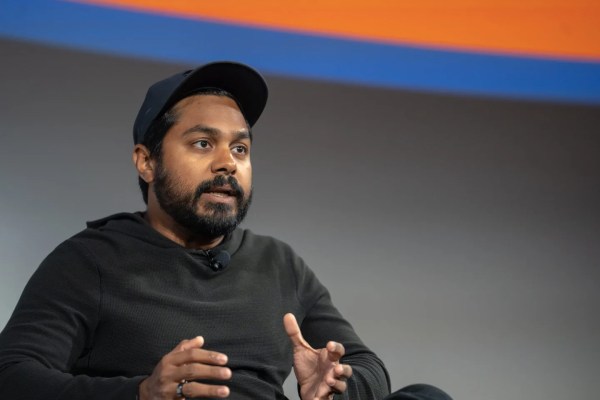As some crypto companies gain mainstream adoption through partnerships, alliances or deals with big brand names, others are operating by the beat of their own drum and not worrying about whether a big label is with them.
Solana, a layer-1 blockchain that launched in 2020, is one of the biggest chains that developers are building on. Excluding stablecoins, Solana is the eighth largest cryptocurrency by market capitalization at around $7.6 billion, according to CoinMarketCap data.
“Solana has the potential to be the Apple of crypto,” co-founder Raj Gokal told TechCrunch+. For many years, Apple focused on two things: user experience and performance, he said. “I think about Apple, having worked for close to a decade on latency for touchscreens to allow for the iPhone to come out and it just felt like magic.”
“There were a lot of things to be built on top of that platform to get the iPhone and App Store and app ecosystem to where it is today,” Gokal added. “But it all started with one relentless focus on a simple interaction that had to work perfectly.”
And that’s a focus that Solana’s core engineering and ecosystem has, he said. It’s important to create a network “that feels like the regular internet, when it’s an entirely new financial internet.”
It’s also worth mentioning that Solana may be trying to compete with Apple through its own web3-focused Android smartphone, Saga, which was rolled out to the public in April (I got to test one out). Solana says Saga was launched to make crypto products and services more accessible for users by offering them through a phone instead of the traditional way of accessing crypto platforms and applications: using computers.
There’s lots that the network is doing to keep itself fresh and competitive. “The core thesis is going to be [focused on] new businesses, new projects, independent developers,” Gokal said. “We are still in an ecosystem and a community that is optimistic about what two developers in a garage can do.”
For example, Tensor, which is one of the largest Solana-focused NFT marketplaces, gained significant traction within the first year of launching. For what it’s worth, the platform is only being run by three people.
“So there isn’t as much emphasis on securing big logos and trusting that large enterprises that drive adoption,” Gokal said. “Some of them are forward leaning, but they’re waiting for new use cases to get validated before turning on their entire user bases.”
So in the meantime, Solana’s potential to grow 10x to 100x is through small “independent businesses” and developers building on its platform, Gokal said. “That’s why we invest in a lot of things like hackathons; even through the bull and bear cycle, we’re seeing hackathon numbers go up and up and up.”
Its most recent hackathon had over 800 submissions, and its hacker houses have had over 17,000 developers come in. “Venture money keeps pouring in, and that’s where our focus is.”
Instead of partnering with big established consumer-facing brands like Nike, Starbucks or Disney — which the layer-2 blockchain Polygon has — Solana would consider joining forces with companies that build infrastructure or payments like Stripe.
In December, Stripe announced its fiat-to-crypto payments on-ramp, and 11 of the 16 projects in the program were based on Solana’s network. Separately, in November, Google Cloud also partnered with Solana to bring its Blockchain Node Engine to the chain, so it could make it easier for people to launch Solana-dedicated nodes on the cloud. That announcement was one of a few that Google Cloud made in relation to Solana.
Then there’s more “highly experimental teams” like cafe chain Boba Guys, which has franchises across 30 cities and is “willing to rapidly experiment with loyalty programs” on Solana, Gokal noted.
“We think we’re at a very early stage of figuring out how NFTs and tokens could drive bigger basket sales and more stickiness with a beverage chain,” Gokal said.
In general, there’s only a handful of “big companies” that make sense to partner with, Gokal said. The blockchain wants to work with teams “that can move, push releases and experiments and measure every week rather than someone really big that has an established view of what they’re looking for and if it doesn’t work they just de-staff it and move on to shinier things like AI, which is the hot new thing.”
